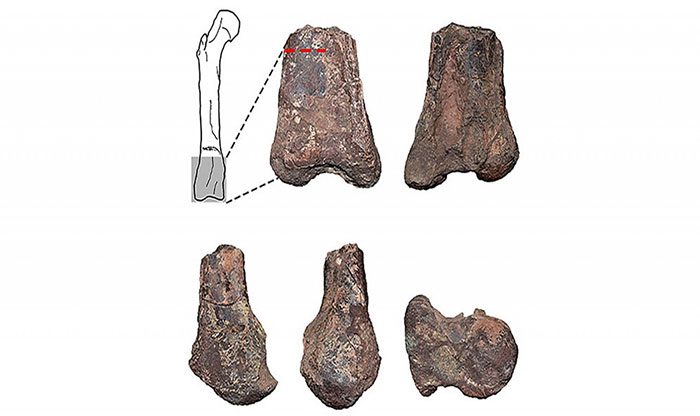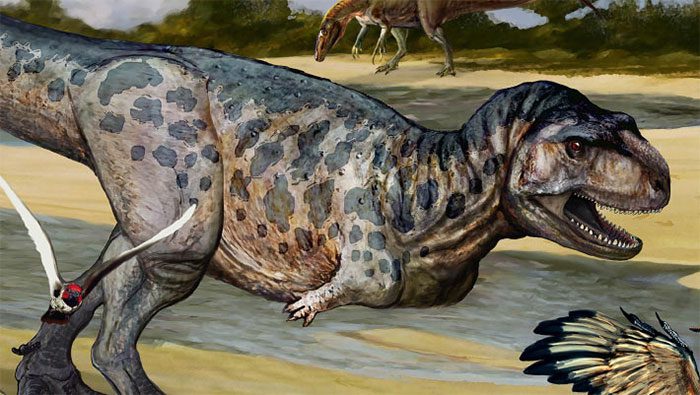Argentina has recently discovered the fossil of a new species of theropod dinosaur belonging to the Abelisaurid family at an archaeological site near the city of Plaza Huincul in the Neuquén province of southern Argentina.
This information was announced by the National Scientific and Technical Research Council of Argentina (Conicet).

Fossil remains of the femur of Elemgasem nubilus. (Source: Newsflash).
The fossil has been named “Elemgasem nubilus.” The name Elemgasem is derived from a deity in the mythology of the indigenous Tehuelche people of South America, while nubilus means “cloudy days” in Latin.
According to Conicet, fog is very rare in the archaeological area, but this weather phenomenon persisted for several days during the time scientists were discovering the fossil of the Elemgasem nubilus dinosaur.

Reconstruction of the dinosaur Elemgasem nubilus.
Through the analysis of the fossil sample, scientists determined that this was a bipedal dinosaur specialized in preying on herbivorous animals. It is estimated to have a length of about 4 meters and a height of nearly 2 meters.
Elemgasem nubilus belongs to the theropod dinosaur family which includes several previously discovered genera such as Patagonykus, Megaraptor, Neuquenraptor, and Unenlagia.
The fossils of all these dinosaur genera have been found in an archaeological area located approximately 1,250 kilometers southwest of the capital city, Buenos Aires.
This family of dinosaurs dominated the fauna during the Late Cretaceous period (from 100 to 66 million years ago) on the supercontinent Gondwana (which included present-day Antarctica, South America, Africa, Madagascar, India, the Arabian Peninsula, Australia – New Guinea, and New Zealand).
The lead scientist on the team, paleontologist Mattia A. Baiano, emphasized that this new discovery is significant as it allows scientists to learn more about the species that lived 90 million years ago.


















































